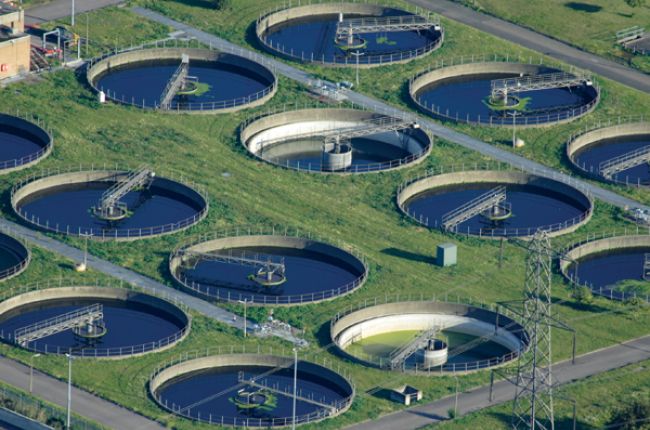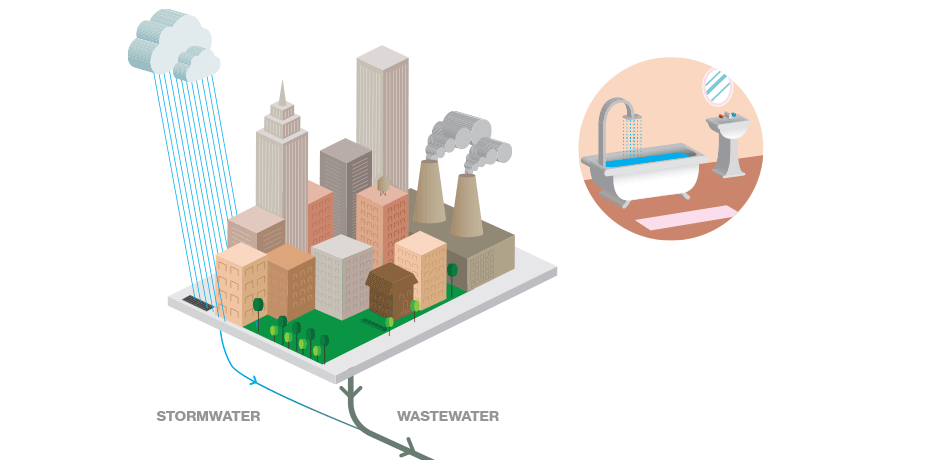Cost-Effective Solutions for Large-Scale Waste Water Treatment Facilities
Wiki Article
Strategic Approaches to Improve Drainage Therapy Performance and Lessen Environmental Impact
In the realm of drainage therapy, the mission for boosted effectiveness and reduced environmental effect is a continuous difficulty that demands tactical solutions. As culture faces the essential to take care of water sources sustainably, a nuanced method ends up being crucial. The integration of advanced treatment modern technologies, energy-efficient processes, resource recovery approaches, boosted nutrient removal methods, and smart tracking and control systems stands for a complex structure for resolving these pushing problems. What lies at the core of this complicated web of strategies is the possible to reinvent the method we approach waste water therapy, not simply as a process of disposal, but as an important chance for development and environmental stewardship.Advanced Treatment Technologies
Advanced membrane layer filtration systems have revolutionized sophisticated wastewater therapy procedures, dramatically boosting the removal of impurities. These cutting-edge systems function forcibly water via a semi-permeable membrane, effectively separating impurities from the water stream. The membrane layer's tiny pores trap contaminants such as germs, infections, and suspended solids, enabling only detoxified water to travel through. This technology has confirmed to be extremely efficient in eliminating a wide range of contaminants, including pharmaceuticals, hefty steels, and natural compounds, which are frequently testing to remove through conventional therapy approaches.Additionally, membrane layer filtering systems provide various advantages over traditional treatment techniques. Furthermore, these systems are highly functional and can be quickly integrated right into existing treatment plants or made use of as standalone systems for decentralized applications.
Energy-Efficient Processes
The combination of energy-efficient procedures in wastewater treatment systems is important for enhancing source usage and decreasing operational prices. By executing energy-efficient technologies, therapy plants can substantially reduce their carbon impact and overall ecological influence. One crucial method to enhancing power performance in wastewater treatment is the use of advanced oygenation systems, such as fine bubble diffusers or surface area aerators, which can boost oxygen transfer efficiency and minimize power intake. Furthermore, including power healing systems, like anaerobic food digestion for biogas manufacturing or using excess warmth for thermal processes, can assist counter energy requirements and promote sustainability.Moreover, enhancing procedure control and automation via using sophisticated sensing units and monitoring systems can enhance overall energy effectiveness by adjusting procedures in real-time based upon actual need and conditions. Carrying out energy audits and consistently keeping an eye on power performance signs are important methods to determine locations for enhancement and track energy-saving campaigns efficiently. On the whole, the adoption of energy-efficient procedures in wastewater therapy not only benefits the setting but likewise contributes to long-term cost savings and functional sustainability.
Source Recuperation Approaches
With an emphasis on enhancing resource application and sustainability in wastewater therapy systems, the application of resource recuperation approaches arises as a critical aspect in enhancing functional effectiveness. Source recovery techniques in wastewater treatment entail the identification and removal of useful sources from the waste stream, consequently turning what was as soon as taken into consideration waste into an important asset. By applying source recovery strategies such as nutrient removal and recuperation, power generation from raw material, and the manufacturing of reusable water, wastewater therapy plants can decrease environmental influence while making the most of performance.
Boosted Nutrient Elimination Strategies
Implementing advanced nutrient elimination methods is necessary for enhancing the performance of wastewater therapy systems. Enhanced nutrient removal plays an important function in decreasing the ecological influence of cured effluent discharged into water bodies. One of the essential methods used for improved nutrient removal is the process of biological nutrient elimination (BNR), which includes the removal of nitrogen and phosphorus via organic processes. This can be achieved with making use of specialized bacteria that can transform nitrogen compounds into inert nitrogen gas with denitrification, and build up phosphorus click here to read within their cells via a procedure called improved biological phosphorus elimination (EBPR)
In addition to BNR, progressed therapy techniques such as membrane layer bioreactors (MBRs) and created marshes can also be utilized to boost nutrient removal effectiveness. MBRs make use of membrane layers to attain premium effluent criteria by efficiently removing nutrients and put on hold solids. Created wetlands imitate natural wetland procedures to eliminate nutrients with plant uptake, microbial task, and sedimentation. By including these advanced nutrient elimination techniques right into wastewater treatment systems, sectors and districts can successfully lower nutrient air pollution and protect the environment.
Smart Surveillance and Control Solution
Using cutting-edge innovation, the assimilation of clever tracking and control systems revolutionizes the operational performance of wastewater treatment facilities. These systems include innovative sensors and information analytics to constantly keep track of key criteria such as pH degrees, turbidity, liquified oxygen, and flow prices in real-time. By gathering and analyzing this information, operators can acquire valuable understandings into the efficiency of the treatment procedures, enabling positive modifications to enhance therapy efficiency.Smart monitoring and control systems likewise support remote surveillance capabilities, permitting operators to gain access to real-time data and control features from off-site places. This remote access improves functional versatility and responsiveness, making it possible for quick treatments in instance of system malfunctions or variations in influent quality. The predictive upkeep capacities of these systems aid protect against devices failings and minimize downtime, eventually enhancing the general integrity of wastewater treatment operations.
Final Thought
In verdict, strategic techniques such as advanced treatment innovations, energy-efficient procedures, source recovery strategies, boosted nutrient elimination techniques, and smart tracking and control systems play a critical role in improving wastewater treatment performance and decreasing ecological impact. By implementing these strategies, wastewater treatment plants can improve their overall performance, decrease energy usage, recoup beneficial sources, and make certain conformity with ecological guidelines. These approaches are vital for lasting and effective wastewater management practices.
In final thought, strategic strategies such as sophisticated therapy innovations, energy-efficient procedures, resource recovery methods, boosted nutrient removal strategies, and smart surveillance and control systems play a critical function in boosting wastewater therapy effectiveness and decreasing environmental influence.
Report this wiki page